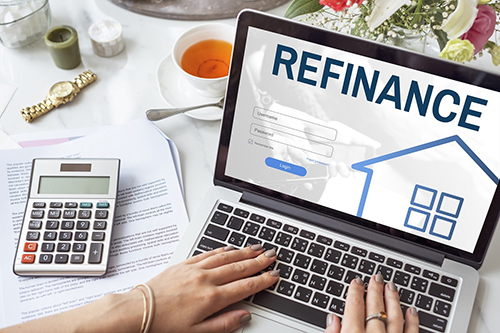November 15th 2018
 In our last newsletter we outlined a very simple plan for wealth accumulation as well as developing a substantial income stream into retirement. Very simply, that plan involved buying one rental property a year for ten years. Never amortizing a mortgage for more than fifteen years. And never selling. It’s really that simple. Follow that plan and you’ll be assured of a comfortable income throughout your retirement years.
In our last newsletter we outlined a very simple plan for wealth accumulation as well as developing a substantial income stream into retirement. Very simply, that plan involved buying one rental property a year for ten years. Never amortizing a mortgage for more than fifteen years. And never selling. It’s really that simple. Follow that plan and you’ll be assured of a comfortable income throughout your retirement years.
There’s only one problem. The down payment. To implement the plan you’ll have to come up with a down payment. And not just one. You’ll have to do it ten times. Anyone who owns their own home, and remembers back to the first house they ever bought, will probably remember well how difficult it was to save up the down payment. It’s the toughest part, by far. But it must be done. It will require some discipline on your part. But here’s some things to keep in mind.
Often when we think of buying a piece of real estate the idea of a 20% down payment comes to mind. We may even have referenced it in some of our past articles. When you put in 20% of your own money and arrange a mortgage for 80% or less, it’s called a conventional mortgage. In order for banks and most lending institutions to lend more than 80% of value, the loan must be insured against default. But for most of us, especially if we’re looking at a property purchase of $250,000 to $350,000 or even more, the idea of coming up with 20% as a down payment is pretty far-fetched. That would require us to save $50,000 to $70,000 in one year. For most of us that’s just not possible.
What about a high ratio insured mortgage? Would that work? When you are purchasing your own principal residence, there is provision to get an insured mortgage of 95% of the value of the property. Unfortunately that’s not the case for rental property. The highest you can go for a mortgage on rental property is 80% of value. Lenders will not offer and insure a high ratio mortgage for investment ‘rental’ property.
Perhaps a better way to reduce the size of your down payment from 20% to say 10% is by means of a vendor take back mortgage. By this I mean that you apply for a conventional first mortgage of 80% then ask the seller to hold a second mortgage of 10%. That reduces the amount required at the time of purchase to 10%. Unlike principal residences, where the seller generally needs all the money to buy his next home, often investment property is owned by an investor who wishes to place his money in a secure investment. A second mortgage secured against the property is a good investment which helps complete the sale. Often you can arrange a V.T.B. second mortgage at the same rate as the first, which is still higher than the seller would get from a bank.
 I should caution however, that most lenders will not advance a first mortgage on a rental property where a second mortgage is advanced. A lot will depend on the relationship you have developed with your personal lender over the years.
I should caution however, that most lenders will not advance a first mortgage on a rental property where a second mortgage is advanced. A lot will depend on the relationship you have developed with your personal lender over the years.
If you currently own your home however, and have significant equity there, that can be an excellent source of funds for the down payment. While lenders generally do not allow the down payment to be ‘borrowed funds’, they do make an exception for secured lines of credit. So first arrange a line of credit registered against your home. Then when you are looking for a mortgage on that investment property, 80% will be by way of a first mortgage and the 20% down payment can come from your credit line. A bonus is the fact that interest on the credit line is a deductible expense on your income tax. But bear in mind that the additional cost of carrying that credit line will be factored with your ability to service the debt.
Suppose instead that you are determined to save the down payment for that investment purchase. It will be difficult, but it can be done over time. It will require discipline. You may feel that you don’t have any surplus cash that you can save from your weekly pay. And that’s no doubt true. But for most of us, it would be true regardless of how much we earned. Our spending habits will always rise to meet and often exceed our income.
Here’s a simple plan that’s always worked for me. Increase the amount you have deducted for income tax by an additional 25% of your gross income. Crank it up! It’ll really hurt for a while, but you can adjust and you will. And while I realize the tax people don’t pay any interest like a savings account would, you also can’t get at it once it’s sent in. Except at tax time. Follow this little practice and you’ll love tax time. Every year you’ll be in for a sizeable tax return. Forced savings. And in one or two years, there’s your down payment.
One more thought I’d like to leave you with. Our plan calls for the purchase of one property a year for ten years. A minimum of ten properties. That’s essential if you want a retirement income of at least $100,000 in today’s dollars. It will take some real discipline to save the down payments. But you don’t necessarily have to save for them ten times. There is another way.
 Suppose at the end of year five, instead of saving for your sixth property, you elect instead to refinance the first property you purchased. You’ve owned it for five years now and in that time two things have happened. On a 15 year amortization you’ve paid a fair amount off the mortgage. At the same time the property may well have gone up in value. You can easily refinance it and take out enough money to buy another property or more than one. With the increased rent you may not have to increase the amortization by that much, but even if you increase it back to 15 years that’s okay. Do that once a year with your next four properties and you’ve achieved your ten, but only had to save for five.
Suppose at the end of year five, instead of saving for your sixth property, you elect instead to refinance the first property you purchased. You’ve owned it for five years now and in that time two things have happened. On a 15 year amortization you’ve paid a fair amount off the mortgage. At the same time the property may well have gone up in value. You can easily refinance it and take out enough money to buy another property or more than one. With the increased rent you may not have to increase the amortization by that much, but even if you increase it back to 15 years that’s okay. Do that once a year with your next four properties and you’ve achieved your ten, but only had to save for five.
Of course, all this requires time. As we’ve seen, you can amass immense wealth if given enough time. But what if you’re older and don’t have as much time? We’ll talk about that next issue.
Wayne Quirk, Author
“THE MONEY MACHINE”
wayneq@remax-gc.com
